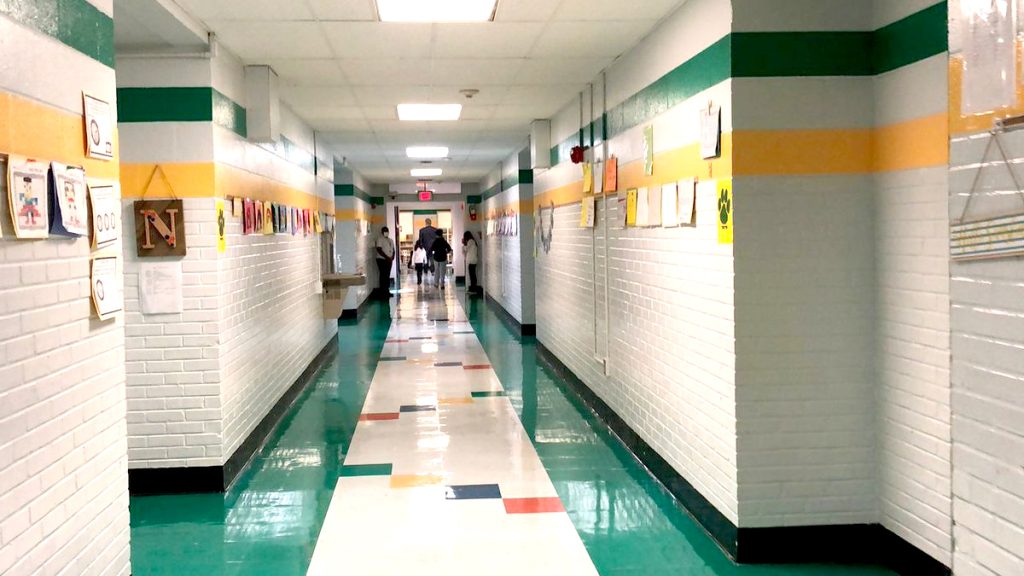By Savannah Tryens-Fernandes
Nearly one in five Alabama students are chronically absent from school.
That means about 127,000 students missed more than 18 days of school in 2021-22, according to new data from The Associated Press and Stanford University. Experts say it could be higher, if not for targeted work from organizations like the Helping Families Initiative, which have invested resources into making sure students remain in the classroom.
“We look for the root causes of [truancy and absenteeism] and we form individualized intervention plans that are student and family and neighborhood specific,” said John Tyson, director of the Helping Families Initiative and former Mobile County District Attorney.
Across the country, students have been absent at record rates since schools reopened during the pandemic. More than a quarter of the nation’s students missed at least 10% of the 2021-22 school year, making them chronically absent, according to the most recent data available. Before the pandemic, only 15% of students missed that much school.
“The long-term consequences of disengaging from school are devastating. And the pandemic has absolutely made things worse and for more students,” said Hedy Chang, executive director of Attendance Works, a nonprofit addressing chronic absenteeism.
All told, an estimated 6.5 million additional students became chronically absent, according to the data, which was compiled by Stanford University education professor Thomas Dee in partnership with The Associated Press.
The absences come on top of time students missed during school closures and pandemic disruptions. They cost crucial classroom time as schools work to recover from massive learning setbacks, the AP found.
Absent students miss out not only on instruction but also on all the other things schools provide — such as meals, counseling, socialization. In the end, students who are chronically absent — missing 18 or more days a year, in most places — are at higher risk of not learning to read and eventually dropping out.
Kids are staying home for myriad reasons — finances, housing instability, illness, transportation issues, school staffing shortages, anxiety, depression, bullying and generally feeling unwelcome at school, according to the AP.
The Helping Families Initiative, which is a partnership between Alabama district attorneys, schools and other state agencies, have reduced truancy and chronic absenteeism in districts throughout the state by addressing these root causes. The program currently works with 21 districts’ attorney offices.
Even when families face huge barriers like poverty or ongoing mental health concerns, Tyson said, individualized solutions are still possible. They just take time and attention.
Tyson’s organization has provided families with washing machines and stoves so kids can have clean clothes and meals for school; shoes for a student who left school everyday at noon because he grew out of the pair he had and his feet were too sore to go to his next class; mental health appointments for children who had not been previously evaluated; and social workers in homes for parents who were illiterate and needed help reading the instructions for their children’s prescriptions.
“The inner agency team is the magic here. We’re not limited by an individual case officer’s experience or by the individual menu of any agency whether it be public or private. Our individualized intervention plans are comprehensive and provide for coordinated and collaborative services amongst all the various agencies that may have something that we might need,” Tyson said. “That not only does great things for the child and the family, but also improves the value of every one of our participating agencies.”
Helping Families has helped school districts create inter-agency, individualized plans for students identified as chronically absent and at-risk for dropping out.
The organization began working with Russell County Schools in 2017 after it reported chronic absenteeism rate of over 23%. After a year, they cut that rate to 9%. By 2020, the rate dropped even further to 3%.
According to a RCS analysis, helping more students attend school regularly allowed 12,000 additional days of instruction time compared to previous school years.
Still, most Alabama schools saw huge jumps in their absentee rates in 2022, a possible lingering pandemic disruption, according to an analysis by AL.com. Absences worsened in every state with available data — notably, the analysis found growth in chronic absenteeism did not correlate strongly with state COVID rate, according to the AP report.
Montgomery Public Schools has implemented a new policy this school year to try to reduce their rates. MPS students who are absent 15 consecutive days will be withdrawn from school after district personnel conduct a home visit and a certified letter is mailed to the parent with no response
One of the district’s high schools – Sidney Lanier High School, which will be shutdown in the next few years as outlined in MPS’s capital plan – had a chronic absentee rate of 50.4%, the 16th highest of any school in the state.
Marbury High School in Autauga County had the highest absentee rate in 2022 at nearly 59% of its enrolled students.
“Addressing chronic absences allows you to address wider community problems. This program is an additional tool that is available to battle the broader issue of crime in this state. Not every kid who is absent commits crime. I’m not gonna say just because you’re absent you’ll wind up being a criminal; but too often, that is what occurs,” Tyson said.
“My disappointment as district attorney was the discovery that even though we knew who might be in trouble, we didn’t do anything about it till it’s time to arrest and that’s too late. If we can address the root causes earlier, attendance and behavior issues take care of themselves.”










